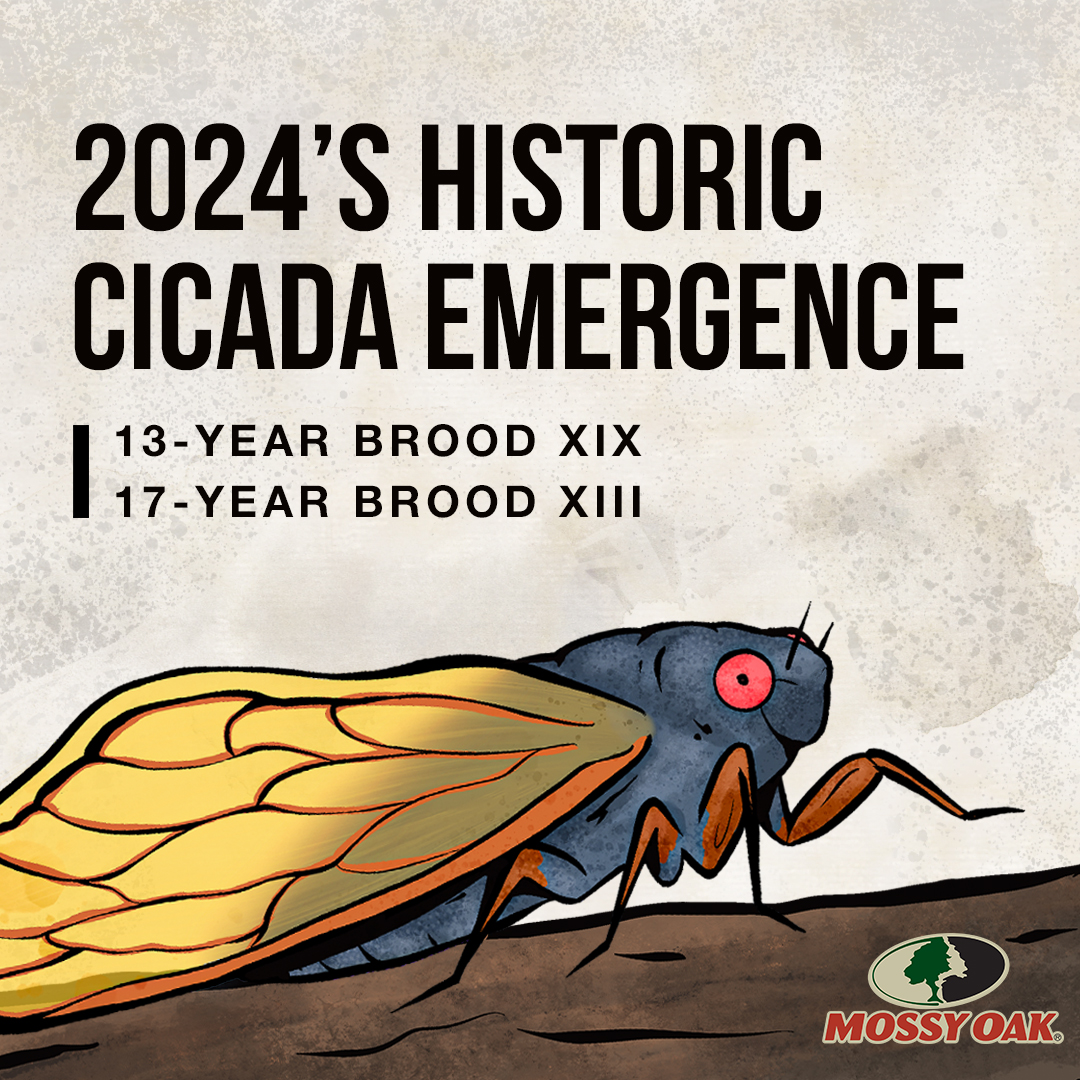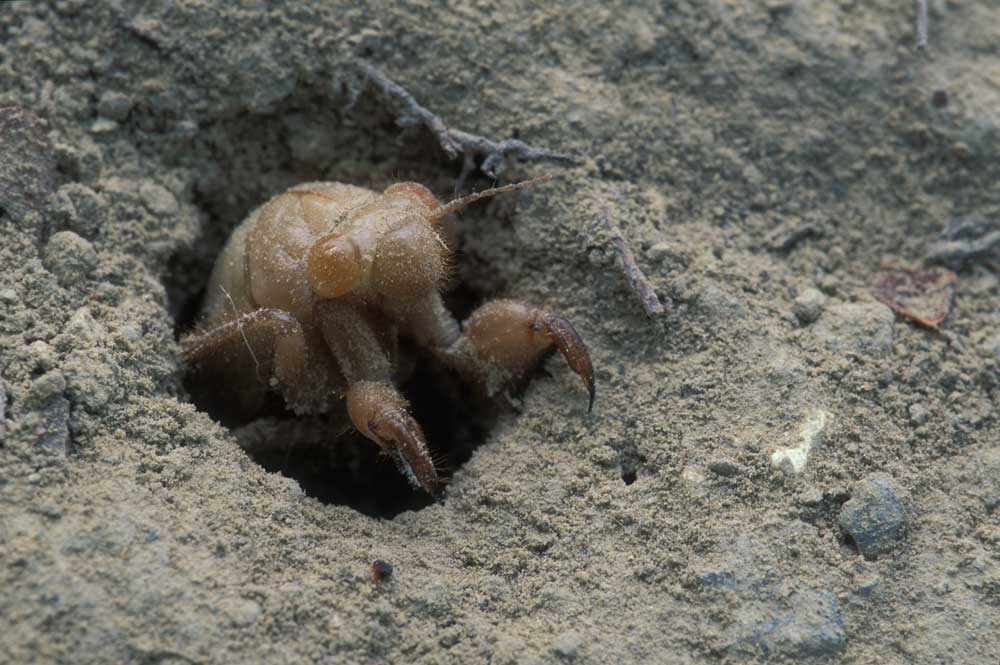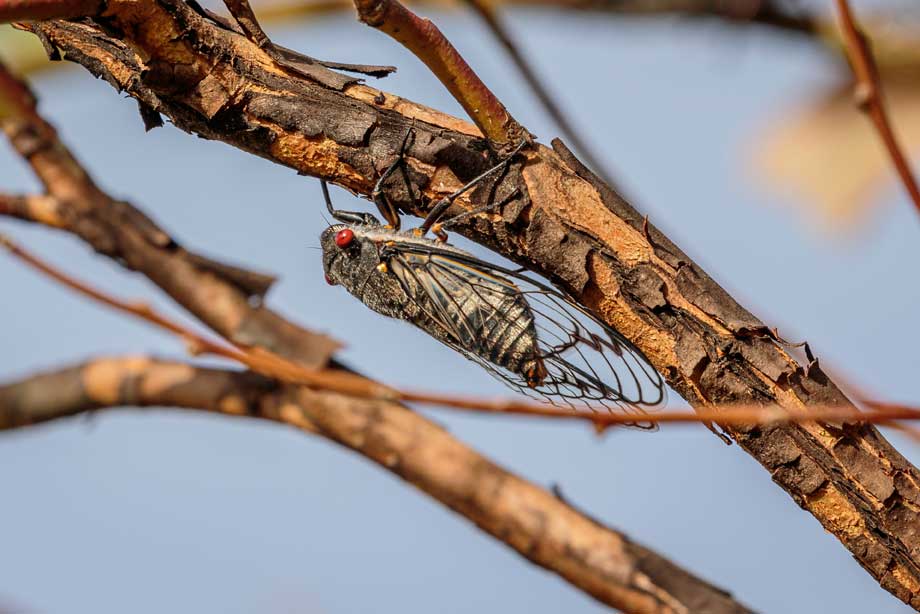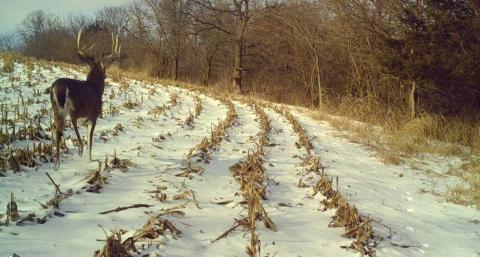
Periodical cicadas have an incredibly fascinating journey through life; they are among the longest living bug species, for one, and for another, they spend the overwhelming majority of their life creating tunnels and living underneath the earth, waiting exactly 13 or 17 years for their emergence.
2024 proves to be an especially fascinating year, as for the first time since 1803 the Broods XIX and XIII will emerge at the same time. To underline the rarity and spectacularity of this year's emergence, we will not see a crossover of these broods again until 2245.
Americans can expect trillions of loud, screaming cicadas to emerge from their 13 and 17 year underground lives and spend about two weeks breeding, searching for a mate, and, penultimately, dying, thus beginning the cycle anew.
Scientists attribute the decimal level of a large group of cicadas to be comparable to that of a rock concert or an ambulance siren; if your state is affected by the emergence, there will be no not knowing about it.
For us at Mossy Oak and all other hunters and fisherman, we wanted to know how exactly this will benefit the wildlife around us. We excitedly theorized how it could help turkey hens lay eggs with tougher shells (due to the protein influx) and with the abundance of food options, nest predators may not seek out turkey eggs.
The same is true for deer, fish, and all other wildlife: the influx and over abundance of food seems like it can really only be a positive. We talked to an entomologist on the Gamekeeper Podcast and he agreed, it will be a positive in many ways for multiple species; the holes in the ground created from their emergence also benefit the plants and trees by aerating the soil; any uneaten carcasses will also provide nutrients to the soil.
Though our entomologist friend and friend of Mossy Oak Dr. Mike Chamberlain doubts any long-term benefits will be seen from the historical emergence, it certainly provides a short-term positive effect on the environment.
(Though it may get difficult to hear gobbles in the turkey woods.)
About 13 years ago, our own Marketing Director Jesse Raley examined the cycle of these fascinating bugs for the Gamekeeper Magazine. He was at that time the Marketing Manager for Nativ Nurseries and he remains equally as fascinated and curious by his natural surroundings today. Enjoy and learn.
-Jessi Cole
On Periodical Cicada Cycles
Originally written by Jesse Raley in 2012
Last Spring, some of you may have heard a louder than normal hummm or buzz in the air. Accompanying this sound, you may have noticed hundreds of “locust shells” attached to seemingly every surface that wasn’t smooth, plastic, or metal. The trees were covered from the bottom of the trunk to the tips of the leaves, everything from wooden fence posts to house siding, you name it… and it was loaded with crusty brown exoskeletons from what many folks mistakenly call a “locust”. As days passed and the number of insect encounters radically increased, you might have found yourself thinking… WOW… this almost seems like a plague similar to those described in biblical times. Eventually, the “song” of the Cicada seemed to dampen, sounds of birds chirping and the whisper of leaves blowing in the wind returned to the air. If you were fortunate enough to witness this rare occurrence, consider yourself lucky. This phenomenon only occurs in the eastern parts of North America and if you want to hear it again you’ll have to wait another thirteen years.
Working for a company that’s employees spend LOTS of time outdoors, the thirteen year Periodical Cicada was the topic of many conversations around the office. As hunters, and outdoorsman in general, many theories about what impact the cicadas would have were tossed around. One of the biggest concerns was the effect on local ag crops as well as the damage they might cause to trees in the area. These questions peaked my interest and I decided to gather some info on the subject. Take note, I’m no entomologist, self proclaimed “bug expert” or even a biologist for that matter. I’m merely a regular guy who finds nature and all it has to offer extraordinarily fascinating and I enjoy learning what I can, when I can. So in a nutshell, here is a short run down on the periodical cicada.
Cicadas are often referred to as locusts. This is wrong. Locusts are actually a type of leaf eating grasshopper. Both are obviously insects, but not very closely related…think bobcats and beavers, both mammals but very different in many ways. My ( as well as many others in the area) encounter was with the thirteen year periodical cicada, not to be confused with the annual cicada which typically appears in mid to late summer. As you have probably already gathered these creatures only make an appearance every thirteen years, or, periodically. Over the course of their lives, cicadas undergo several changes. They begin as very tiny creatures hatched from eggs deposited in leaves, twigs, and bark by the females. Once hatched, these ant sized juvenile cicadas work their way down to the ground and in to the soil. Juvenile cicadas burry themselves anywhere from 2 inches to 2 feet underground and feed on tree roots. Once they have settled in, they will not see the light of day for a very long time.
Fast forward thirteen years. Its spring, the flowers are beginning to bloom, the trees are starting to bud, and the wild turkeys have…well, you know what turkeys do in the spring. The cicadas have undergone multiple transformations while living beneath our feet and are ready to return from their long dark life underground. Once the ground temperature reaches sixty four degrees cicadas will begin to emerge from the soil. This day has been long awaited. This day they will surface, soon after the cicadas will find a spot to “molt” or shed their exoskeleton, spread their wings, fly around, sing their song (males), mate, lay their eggs (females), and eventually die, returning to the ground like countless generations before them. This whole process lasts about three to four weeks.

Pictured: A cicada emerging from the ground.
Types of Cicadas
Before we talk about the life cycle of the cicada, it is important to note there are around 3,000 cicada species around the world. Even though there are wide varieties of cicadas, they can be broken into three types:
1. The Annual: This cicada species has an annual life cycle and shows up every year.
2. The Photoperiodical: A cicada species that can show up every year, but every so often, they come out in large numbers.
3. Periodical: This is the cicada species that make the news when they show up. They show up every 13 or 17 years by the millions.
Many people think that cicadas show up every 17 years — others argue they hear them yearly. In this case, both are right. It’s just that they are talking about two different species of cicada.
The Egg Stage
There are three stages to the life cycle of the cicada. They are the egg, nymph and adult stages. The egg comes about when the female cuts a slit in the bark of a branch or twig and lays its eggs. The female makes the slit with a sharp tube-like organ called an ovipositor. The slit also seeps sap that hatching nymphs will eat until the nymph falls to the ground. Each slice or nest will be home to 20 to 30 eggs. A single female cicada can lay up to 500 eggs. You may have noticed their eggs at the end of a small branch. The eggs themselves look like a small grain of rice.
In some cases, the end of the branch that was home to cicada eggs will die, leaving behind a limb with dead leaves at the end of the branch. The group of dead leaves is visible from the ground and resembles small brown flags in the trees — thus, the term flagging. The flags or groups of brown leaves do not indicate meaningful damage to the tree, so there is no concern for large groups of cicadas wiping out trees.
The Nymph Stage
After an egg has been in the slit/nest for six to 10 weeks, a nymph will hatch. Soon, the lightweight nymph falls unharmed to the ground. It will then begin digging its way into the dirt of the surrounding vegetation. Since grass and other vegetation have shallow root systems, the nymph will feed there first. Eventually, the nymph grows stronger and works its way to the root system of nearby trees.
There are five development stages of a nymph that biologists call instars. The now underground nymph will feed on Xylem, otherwise known as sap, from the tree’s root system. There is still no concern for damage to the root system, as the saliva of the nymph seals the feeding hole in the root before moving to the next root — Mother Nature’s way of putting the cork back in the bottle.
The Annual and Photoperiodical Cicada Nymph
The annual and photoperiodical cicada nymphs stay underground for two years. Their emergence is not synchronized, so cicadas of this type will emerge every year. Every so often, an above-average number of photoperiodical cicadas will emerge in a short amount of time. Factors like rainfall and the number of other cicada species in the area can affect this. Although the number of photoperiodic cicadas that can emerge at one time is impressive, it is not the massive numbers we see during a periodical cicada emergence.
Basically, breeding lasts about ten days. Soon after, females deposit eggs into leaves, twigs, and bark of specific trees (mainly oak and fruit species) using a knife like appendage called an ovipositor. Six to seven weeks later, the eggs hatch and juvenile or “nymphs”, make their way back to the ground and the long wait begins for this new generation.
How Cicada Emergences Affect Wildlife

Periodical cicadas, pictured here, are larger than annuals and have red eyes and orange bodies.
So… what does this have to do with being a Gamekeeper? Or hunting for that matter? To answer this, lets step back and look at this from a more simplistic point of view. What happened in the grand scheme of things? Seemingly out of nowhere, appears a very high population of protein packed, very nutritious insects that all critters can easily catch and eat. I distinctly remember hearing many stories about turkeys being harvested and hunters finding nearly every bird to be full of these large insects. This easily locatable and consumable food source helps to eliminate pressure from animals normally feeding on berries, fruits, and flowers; allowing more food for deer and other non insect eaters (insectivores). And think about the fish! How many largemouth bass were caught using these real live “buzz baits”. How many weren’t caught because the fish had already had their fill? You can bet all insect eating fish had way more food than they could ever eat for this short period of time.
So sure, the wildlife benefited from this “once in a lifetime chance” to effortlessly dine on an endless buffet of nutrient rich bugs but what about the trees? How did the trees make out during all of this commotion? Weren’t trees the host to this, what seems to be parasite? After all, these things do feed from tree roots and lay eggs in their exterior. The simple answer is NO, no real harm done. Research indicates that root damage from feeding juvenile cicadas is miniscule, and that the only real significant damage that occurs is usually found among very young sapling trees. Eggs deposited by females can kill small twigs. If you’re a seedling and your branches are small twigs, then, you might be in trouble. This can be prevented by simply placing netting over small trees until the short cicada season is over.
So now we know that cicadas aren’t all that bad for trees, but does this mean they can actually be beneficial to trees? The answer is yes! The millions of cicadas not consumed by wildlife end up back on the forest floor where they begin to decay, this gives the top soil a much appreciated dose of completely organic fertilizer. Also, the holes (similar to that of crawfish) created by emerging cicadas offer a direct flow of water to the trees root system. This allows a much more effective level of saturation which will surely come in handy during hot droughty summer months.
After learning so much about this truly fascinating creature I realized just how important even the smallest, seldom seen, bugs can have an enormous impact on all aspects of nature. One of the coolest things to me is the fact that they spend so much time underground waiting to return, like clockwork, thirteen years later. If I have done the correct math, the next time this will occur with this particular set or “brood” of cicadas will be in the spring of 2024. What new world will these new cicadas emerge into? Or will they even have the chance to emerge; will their habitat be lost to new developments? Where will you be in 13 years? A lot can happen in such a long period of time.































